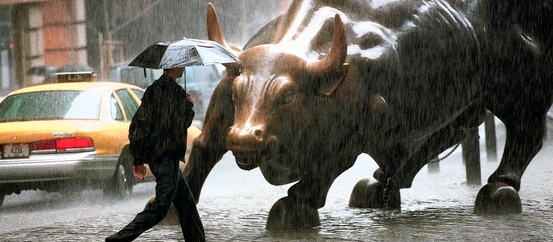We’ve had a remarkable run in the institutional asset-management biz. Good enough to camouflage a lot of mismanagement and sub-optimal decisions.
But we all know that there is trouble ahead and that sooner or later there’s going to be a reckoning.
When things fall apart again, will your foundation or family office be managed by experienced, agile leaders who can cope? Will they keep cool heads when others are losing theirs?
A few years ago an endowment CIO told me: “The board hired us [investment staff] after the 2008 crash because they realized that they never fully understood what they had in their portfolio and there was no one on the inside who could expose and explain the risks.”
“The consultants at the time met with the board once a quarter and kept telling the trustees that everything was fine until our portfolio fell off a cliff.”
The Reckoning
Are there new bubbles about to burst? Here are two possibilities; the unprecedented growth in index vehicles, and the stampede into private equity funds.
The Wall Street Journal reported late last year that the value of US index equity funds had just surpassed US actively managed funds by $4.27 trillion to $4.25 trillion. The Investment Company Institute disputes the Morningstar data, but the growth and appeal of indexing is undeniable.
Who can resist the allure of cheap and easy index funds and ETFs? From 2009 to 2019 the S&P returned a beguiling 11.27 percent annualized, excluding dividend reinvest, and indexers could do no wrong.
Unfortunately, bull markets breed short memories. Few recall that in the prior decade from 1998 to 2009, the S&P actually lost money, delivering a negative 2.72 percent. (Falling a calamitous 55 percent in the final two years, September 2007 to March 2009.)
As for private equity, PitchBook Data calculates that over the last ten years more than three trillion dollars has flowed into private equity and venture capital funds worldwide.
This despite the fact that since 2005, the returns from these illiquid funds have been little better than liquid public market performance.
Some of the best investors in the business have taken notice and are preparing for the possibility of a collapse.
In an interview with the Yale Daily News, Stephen Murphy, Yale’s VP Finance and CFO, revealed that administrators are planning for a possible “decade-long pattern of low endowment returns.”
Yale is wise to do so. In their useful This Time Is Different: Eight Centuries of Financial Folly, Carmen Reinhart and Kenneth Rogoff emphasized that unexpected financial disasters “occur in clusters and strike with surprisingly consistent frequency, duration, and ferocity.”
Over the last fifty years the US has experienced six major financial shocks:
. the 1973–74 stock market crash,
. the late 80s S&L crisis,
. the Black Monday October 1987 crash,
. the 1998 Long-Term Capital Management debacle,
. the 2000–02 dot-com collapse, and
. the “Great Recession” of 2008-09
Note that the average interval between crises in 1973-2008 was 5.8 years and it’s now been over 10 years since the last one.
The challenge for investment boards, CEOs, CIOs, and families is to guard capital and make deft course-corrections when the music stops.
Top Investment Officers Stay on Top
We help boards and investment offices find exceptional all-weather investment leaders with records of sound performance in good times and skillful navigation through the bad times.
Our candidates and insights come from our clients – board members, CEOs, chief investment officers – and the global investment community within which we work as executive search professionals.
Call anytime. We’ll help you recruit CEOs and CIOs who will deliver superior investment performance no matter what the weather.
Charles Skorina
520-529-5677

